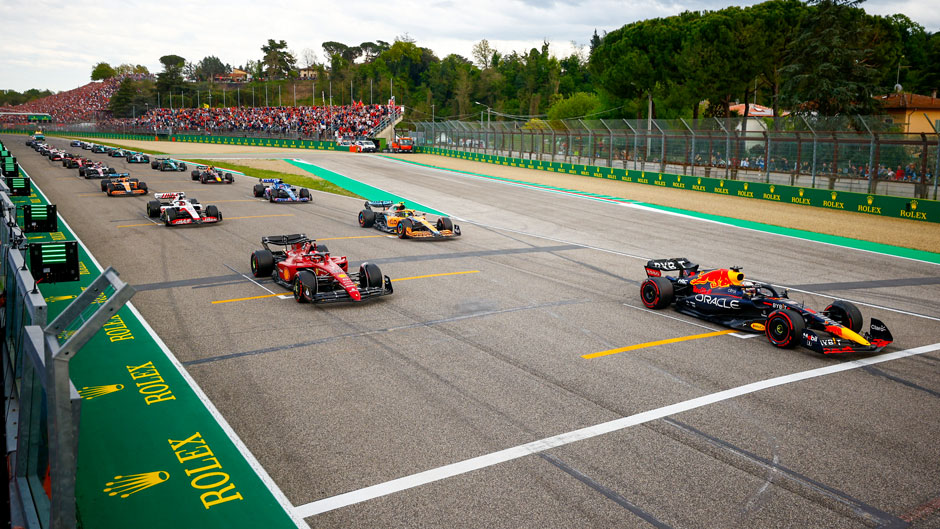A driver isn’t the only thing behind the wheel of a Formula One (F1 or Formula 1) car, the fastest regulated road-course competing cars in the world. It’s physics, too.
On May 8, hundreds of thousands of people from across the nation and around the world will gather for the Miami Grand Prix in Miami Gardens to see the world’s swiftest cars compete on a temporary circuit—the Miami International Autodrome—specially built around the Hard Rock Stadium.
Many are familiar with the highest class of international racing for open-wheel, single-seat formula racing cars but few understand the science behind them—most importantly, the aerodynamic downforce that is key to a successful and secure F1 car.
GeCheng Zha, a professor in the University of Miami Department of Mechanical and Aerospace Engineering, as well as the director of the Aerodynamics and Aerodynamics and Computational Fluid Dynamics (CFD) Lab, said the principles behind F1 cars are like the aircraft wings he studies, except in F1 cars, downforce is the objective rather than lift off. Zha added that F1 cars need to be as fast and safe as possible while simultaneously creating adequate force and the least drag to not “fly away.”
According to Zha, the majority of the downforce in F1 cars is generated from the front wing, which directs the air to other parts of the car so that air can effectively be used toward the rear of the car. The wing also is there to direct air underneath the car as well. The smallest of damage to a front wing can significantly reduce the downforce of the car and will force a driver to make a pit stop for a replacement. Additionally, barge boards, the floor, or bottom of the car, rear view mirrors, the diffuser, and the rear wing are all vital aerodynamic elements.
“Formula One is particularly designed to generate more downforce because if not, it would be easy for them to lift up when driving at their speeds,” said Zha, referring to their ability to accelerate from zero to 62 mph in 2.4 seconds. According to way.com, an F1 car can clock up to 223.6 mph. “The faster the driver is going, the better the downforce is going to work,” Zha added.
At the Grand Prix, a point system is used to regulate two yearly world champions: a driver and a constructor. This year, regulation changes to the front and rear wings will allow spectators to see more superior use of downforce aerodynamics. Zha noted that the regulation changes will keep the sport safer and more exciting for all.
Alex Piquero, the chair of criminology and sociology at the University, is a race-car enthusiast who is well-versed on the environmental impacts and aerodynamics of F1 cars, too. He added that the track the cars race on is often designed specifically for each race—the weather conditions, tire compound (soft, medium, and hard), and more play an important role in the car’s aerodynamics.
Unlike NASCAR tracks, F1 circuits are not circular. The Miami Grand Prix features 19 corners and the race will be 57 laps, according to ESPN.com. Typically, they feature a straightaway road, and the cars travel in a clockwise direction.
“Some cars work better on the long straightaways—where speeds are what matters—compared to corners where braking and wing matters more or less,” said Piquero. “The same car can operate differently on the same track simply by a change in weather conditions and tire choice and race set-up.”
As for environmental impacts that are perceived, Piquero said that he believes the impacts are debatable.
“Historically, it has been believed that F1 cars, especially old ones before the turbo-hybrid era in 2014, produced a lot of CO₂—and of course use gas,” said Piquero, who touts this as an important change because the 2.4 liter V8 engines were replaced by 1.6-liter turbocharged V6 power units, which included fuel along with hybrid energy recovery systems. “The key here is that there is a lot of perception of how bad it is, as we cannot just look at F1 and say ‘Hey, it has a bad impact on the environment,’ because so many other things, like airplane travel, have adverse effects on the environment and some many times worse over. It needs to be taken in context.”
Piquero pointed out that it is also critical to note that in 2019, Formula One committed to being net carbon zero by 2030, with intermediate impacts of sustainability by 2025.

